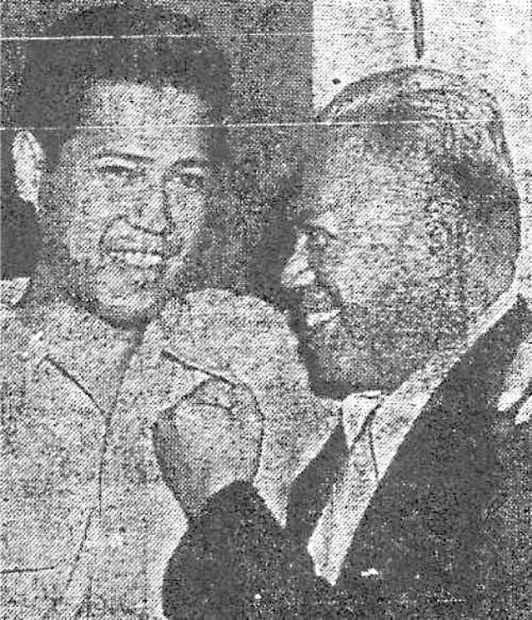Seventeen-year-old civilian worker Patrick Kahaumea Aki of Wailua was stationed on Wake Island on Dec. 8, 1941, when Imperial Japanese naval forces attacked that isolated atoll. Although U. S. Marines and civilian volunteers fought valiantly, they were finally overrun on
Seventeen-year-old civilian worker Patrick Kahaumea Aki of Wailua was stationed on Wake Island on Dec. 8, 1941, when Imperial Japanese naval forces attacked that isolated atoll.
Although U. S. Marines and civilian volunteers fought valiantly, they were finally overrun on Dec. 23, and Aki with other survivors was taken prisoner.
Ten months later, in October 1942, some 265 Wake POWs, including Aki, were shipped to Yokohama, Japan, where they were paraded through the streets and sent on a three-day train journey to a construction camp while being fed only twice a day.
At the camp, even sick and dying POWs were kicked outside to work at hard labor from daylight to late afternoon building a dam in all weather conditions, because guards “said we were working too slowly and had to make up for lost time,” Aki recalled.
Food consisted of watery soup and some grain. Hunger became endless. If a POW died in the mess hall, others would grab his food and share it among themselves.
All POWs were mercilessly beaten with poles. Once, while being beaten, Aki survived when “I pretended I was knocked out and the beating stopped.”
Aki encouraged his fellow POWs to survive, but grinding work and lack of proper food and medical attention took its toll. Within a year 52 POWs had died.
After Japan surrendered and American occupation forces began arriving in 1945, Aki noted that “it took some time for us to accept the idea that we were free again.”
Aki arrived home on Kaua‘i on Oct. 21, 1945, and the news from his parents a couple of days later was that he’d been eating his mother’s Hawaiian food without a letup.
Patrick Aki, who said he bears no animosity toward the Japanese, now lives in Mililani, O‘ahu.


